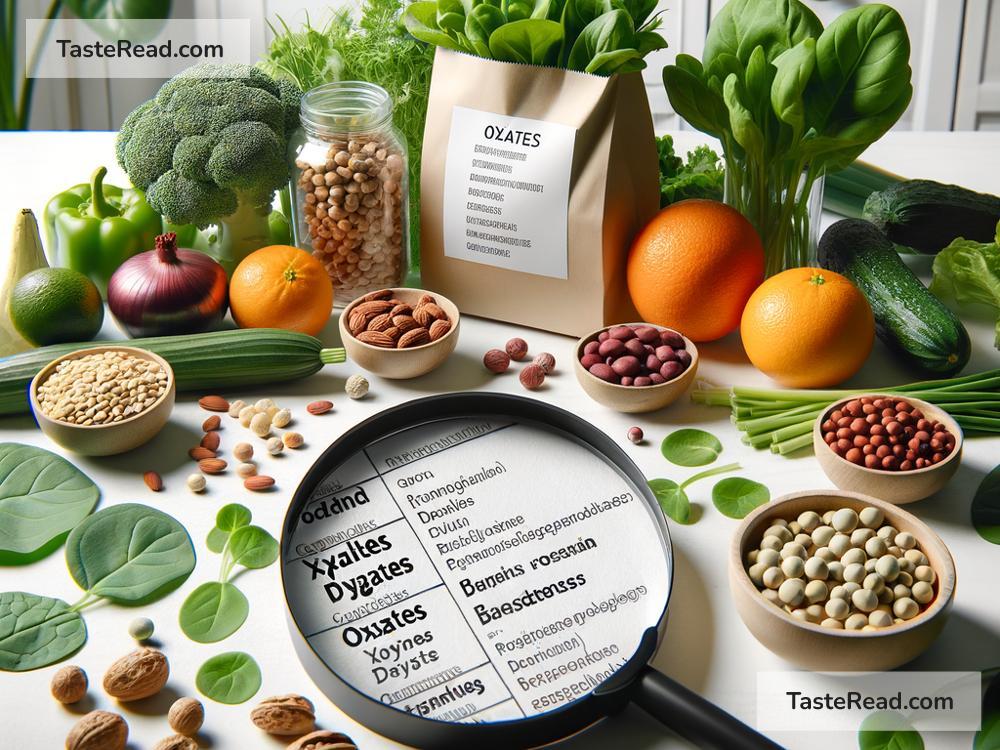How to Identify and Avoid Nutrient-Blocking Compounds: A Simple Guide
Eating healthy is crucial for your well-being, and knowing what foods work best for your body is essential. However, even if you’re consuming nutrient-rich meals, certain compounds in food or drinks can block the absorption of vitamins and minerals in your body. These nutrient-blocking compounds might not outright harm you, but they can prevent you from getting the full nutritional benefit of your diet.
In this article, we’ll explore what nutrient-blocking compounds are, give you some examples, and share simple tips to avoid or navigate them for better nutrition.
What Are Nutrient-Blocking Compounds?
Nutrient-blocking compounds are naturally occurring chemicals in food or drinks that interfere with your body’s ability to absorb specific nutrients. This doesn’t mean they’re “bad” or unhealthy on their own; instead, it means you should understand how they interact with other foods or your body’s digestion.
Examples of nutrient-blocking compounds include:
- Phytates: Found in grains, seeds, nuts, and legumes, phytates bind to certain minerals like iron, zinc, and calcium, making them harder for your body to absorb.
- Oxalates: Present in foods like spinach, rhubarb, and beet greens, oxalates can reduce calcium absorption.
- Tannins: Found in tea, coffee, and wine, tannins can block your body’s ability to absorb iron from plant-based foods.
- Lectins: Found in beans and grains, excessive amounts of lectins can interfere with nutrient absorption and digestion.
- Calcium: When consumed in high quantities, calcium can interfere with iron absorption.
- Alcohol: Heavy alcohol consumption can impede the absorption of nutrients like vitamin A, vitamin D, and folate.
Now that we know what nutrient blockers are, let’s learn how to identify and manage them.
How to Identify Nutrient-Blocking Compounds
To recognize foods that contain nutrient-blocking compounds, you don’t need a degree in nutrition science. Here are some simple ways to spot them:
-
Understand Common Food Sources: Keep an eye out for plant-based foods like beans, seeds, nuts, vegetables, grains, tea, and coffee. While these are healthy foods, some contain phytates, oxalates, or tannins.
-
Learn About Pairing Foods: Nutrient blockers often become a problem when specific food combinations occur. For example, drinking tea or coffee right after eating iron-rich plant-based meals can decrease iron absorption.
-
Educate Yourself About Cooking Methods: Some nutrient blockers can be reduced or eliminated through cooking or preparation techniques. For example, soaking and sprouting grains, beans, or seeds can lower phytate levels.
-
Experiment with Timing: Certain foods can block nutrient absorption if consumed together or in close succession, like calcium interfering with iron.
How to Avoid Nutrient-Blocking Compounds
Avoiding nutrient blockers doesn’t mean cutting out healthy foods altogether—it’s about managing how you consume them. Here’s how:
1. Diversify Your Diet
A balanced, varied diet helps you navigate nutrient blockers naturally. Different foods offer a mix of nutrients, making it less likely a single nutrient blocker will have a major impact on your overall nutrition.
2. Prepare Foods Wisely
Cooking, soaking, fermenting, or sprouting certain foods can reduce nutrient blockers. For example:
– Soaking and sprouting legumes and grains can lower levels of phytates and lectins.
– Cooking spinach and other oxalate-rich vegetables can reduce their oxalate content.
3. Time Your Food and Drink
Some nutrient blockers are less of a problem if you pay attention to timing:
– Limit tea, coffee, or wine with iron-rich meals (especially plant-based iron sources) and consume them hours before or after eating.
– Don’t pair calcium supplements or dairy products with iron-rich meals.
4. Pair Foods Strategically
Certain foods naturally support nutrient absorption and can counteract blockers. For example:
– Pair iron-rich foods like lentils or spinach with vitamin C sources like citrus fruits, bell peppers, or tomatoes to enhance iron absorption.
– Add fats, such as olive oil or avocado, when eating foods rich in fat-soluble vitamins (like vitamin A, D, E, and K) to improve absorption.
5. Be Mindful of Alcohol Consumption
Alcohol can interfere with nutrient absorption, especially when consumed excessively. Moderation is key for both general health and nutrient intake.
6. Consider Supplements
If you suspect you may not be absorbing enough nutrients due to nutrient blockers, talk to your doctor or dietitian about the possibility of supplements. They can guide you on what you truly need, rather than guessing or over-supplementing.
7. Monitor Your Health
Pay attention to symptoms of nutrient deficiencies, such as fatigue, brittle nails, hair loss, or poor immunity. These could signal you need to rethink your dietary habits or consult a healthcare professional.
The Bottom Line
Nutrient-blocking compounds are a natural part of many healthy foods, and they don’t have to scare you from eating well. With a little knowledge and some simple strategies—like soaking your beans, pairing foods smartly, and timing your meals—you can enjoy a varied diet while maximizing nutrient absorption.
Eating healthy isn’t just about what’s on your plate; it’s also about how you prepare, pair, and consume your food. When you understand how nutrient blockers work, you can ensure your body is getting the most out of every bite you eat.
Take charge of your nutrition today by putting these tips to use. Small changes in how you eat can make a big difference to your health!


